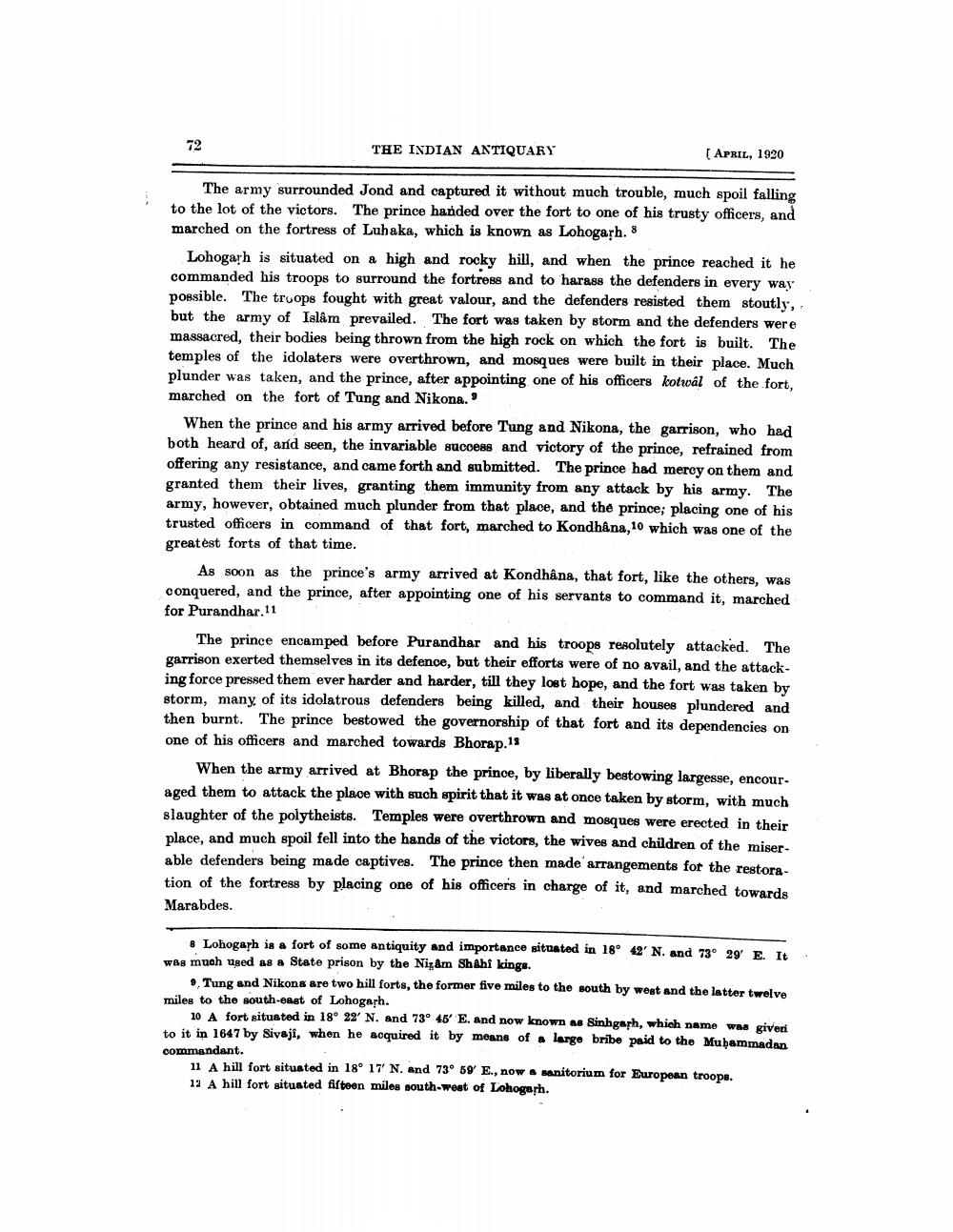________________
THE INDIAN ANTIQUARY
(APRIL, 1920
The army surrounded Jond and captured it without much trouble, much spoil falling to the lot of the victors. The prince handed over the fort to one of his trusty officers, and marched on the fortress of Luhaka, which is known as Lohogarh.8
Lohogarh is situated on a high and rocky hill, and when the prince reached it he commanded his troops to surround the fortress and to harass the defenders in every way possible. The troops fought with great valour, and the defenders resisted them stoutly, but the army of Islâm prevailed. The fort was taken by storm and the defenders were massacred, their bodies being thrown from the high rock on which the fort is built. The temples of the idolaters were overthrown, and mosques were built in their place. Much plunder was taken, and the prince, after appointing one of his officers kotwal of the fort, marched on the fort of Tung and Nikona.'
When the prince and his army arrived before Tung and Nikona, the garrison, who had both heard of, and seen, the invariable success and victory of the prince, refrained from offering any resistance, and came forth and submitted. The prince had mercy on them and granted them their lives, granting them immunity from any attack by his army. The army, however, obtained much plunder from that place, and the prince; placing one of his trusted officers in command of that fort, marched to Kondhåna 10 which was one of the greatest forts of that time.
As soon as the prince's army arrived at Kondhâna, that fort, like the others, was conquered, and the prince, after appointing one of his servants to command it, marched for Purandhar. 11
The prince encamped before Purandhar and his troops resolutely attacked. The garrison exerted themselves in its defence, but their efforts were of no avail, and the attacking force pressed them ever harder and harder, till they lost bope, and the fort was taken by storm, many of its idolatrous defenders being killed, and their houses plundered and then burnt. The prince bestowed the governorship of that fort and its dependencies on one of his officers and marched towards Bhorap.13
When the army arrived at Bhorap the prince, by liberally bestowing largesse, encouraged them to attack the place with such spirit that it was at once taken by storm, with much slaughter of the polytheists. Temples were overthrown and mosques were erected in their place, and much spoil fell into the hands of the victors, the wives and children of the miserable defenders being made captives. The prince then made arrangements for the restoration of the fortress by placing one of his officers in charge of it, and marched towards Marabdes.
Lohogarh is a fort of some antiquity and importance situated in 18° 42' N. and 73° 29 E It was much used as a State prison by the Nizam Shahi kinge.
Tung and Nikons are two hill forts, the former five miles to the south by west and the latter twelve miles to the south-east of Lohogarh.
10 A fort situated in 18° 29' N. and 73° 46' E. and now known as Sinhgach, which name was giveri to it in 1647 by Sivaji, when he acquired it by means of a large bribe paid to the Muhammadan commandant.
u A hill fort situated in 18° 17' N. and 73° 59 E., now sanitorium for European troops. 12 A hill fort situated fifteen miles south-west of Lohogarh.




